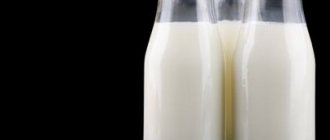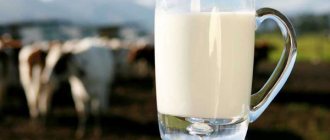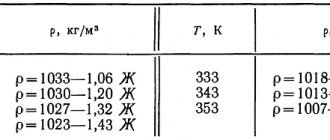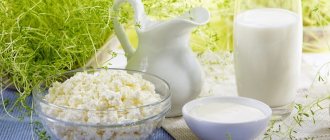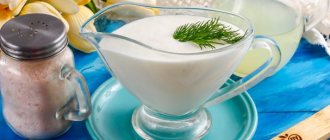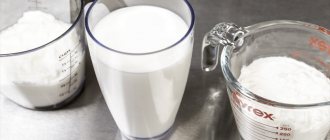In this article we will tell you:
- Principles of milk pasteurization
- Types of milk pasteurization
- Milk pasteurization quality
- Stages of pasteurization of milk in production
- Requirements for raw materials for the production of pasteurized milk
- GOST requirements for pasteurized milk
- Conditions for storing and transporting milk after pasteurization
- Which is better – pasteurization or ultra-pasteurization
- Pediatricians' recommendations for consuming pasteurized milk
- Who is not recommended to drink pasteurized milk?
- Shelf life of pasteurized milk in the refrigerator
Pasteurizing milk is a proven way to keep the product fresh and safe for consumption. The pasteurization method, which will soon be 200 years old, is successfully used in large industries and small enterprises.
Milk processing time, temperature conditions, packaging in which milk is packaged, and storage conditions are all important factors affecting the quality of the final product. How milk is pasteurized, read in our material.
Principles of milk pasteurization
Pasteurization is the heat treatment of raw materials at temperatures ranging from +63...+100 °C, while the specific degree of heating depends on the method used. This method of destroying microorganisms in liquid was named after its creator, the French scientist Louis Pasteur.
The effectiveness of milk pasteurization is explained by the use of increased temperature and duration of exposure of raw materials. In this case, the milk is not boiled, as a result, bacteria dangerous to humans are killed and the beneficial milk microflora and important characteristics of the drink, such as consistency, taste, and smell, are preserved.
The key to the successful destruction of pathogenic microflora is to carry out processing in compliance with all standards and preliminary sterilization of utensils and equipment. Otherwise, there is a possibility of up to a billion bacteria being introduced into the milk, which can actively multiply in favorable conditions. As a result, there will be up to a million microorganisms per milliliter of liquid.
Lyubov Mikhailovna Guseva
Director and founder of Liton LLC
Package of documents for downloading from the founder
A dairy product labeling system will be launched in January 2022 and will become mandatory from May 1, 2022. Both manufacturers and those involved in the sale of this type of product will have to make some amendments to their work.
That is why we have made a selection of the most useful documents on dairy product labeling to help you. It's free. Download and use today!
- Requirements for the design of dairy product labeling Scheme of interaction with the printing house, recommendations for design layout, packaging example
- 11 important questions “About labeling” Parameters of the labeling code, how it can change, applying CM to packaging
- Labeling of dairy products step by step Structure of the marking code, identification code for group packaging of dairy products
- Decree of the Government of the Russian Federation of December 15, 2022 No. 2099 On approval of the Rules for marking by means of identification and implementation features
Pasteurization is deservedly considered an effective and affordable method of disinfection. After its use, milk can be eaten or used to prepare dairy or fermented milk products.
How is it different from sterilization?
Milk can be pasteurized or sterilized. What is the difference?
Sterilization and pasteurization are two different processing processes. To choose the right product in a store, you need to understand their differences.
During pasteurization, milk is heated at temperatures of 65-100 degrees. The higher the temperature, the shorter the processing time.
When sterilizing, the product is processed at 120-150 degrees for up to half an hour.
There are no harmful bacteria in sterilized milk, but there are no beneficial ones either! And beneficial microorganisms are preserved in a pasteurized product.
Sterilized milk can be stored for a long time, up to a year, but only under the right conditions. But pasteurized milk can last no more than 2 weeks.
The nutritional value of a pasteurized product is lower than that of a sterilized product. Pasteurized milk can be used to make lactic acid products.
It sours well, but sterilized milk does not sour, but simply becomes bitter. As you can see, sterilization and pasteurization of milk have significant differences.
Types of milk pasteurization
For heat treatment, different modes are chosen, taking into account the features of each procedure:
- Long-term pasteurization of milk ensures almost complete suppression of the vital activity of dangerous bacteria, while the properties of the product remain unchanged. The method is used only in exceptional situations due to its labor intensity.
This milk pasteurization mode requires heating the raw material to +65 °C for half an hour in special large double-walled baths. It is the processing time that is the key difference between this approach and all others. This method has proven itself to be one of the most effective, as it allows you to destroy 99% of microorganisms.
- Short-term pasteurization of milk uses only hot water, which means it is more accessible.
The method is based on heat exchange: the temperature of the milk is raised to +71 °C and held for 40 minutes. This method is not much inferior to long-term processing technology, since its efficiency is at the level of 98%.
- High-temperature pasteurization requires instant heating of milk using hot water and steam to at least +85 °C. At its core, this approach is close to short-term, the only difference is that there is no endurance. This ensures suppression of saprophytic microflora by 99.5%.
It is worth mentioning that today this technology is practically not used due to its specifics. However, it can be effective for processing cream intended for butter production.
We recommend
“Types of heat treatment of milk: from pasteurization to sterilization” Read more
- Ultra-high temperature pasteurization consists of two stages. In the first step, the temperature is increased to +70…+80 °C.
After which heating is continued using steam, reaching +135…+150 °C. At this temperature, the milk pasteurization time is no more than a minute.
Regardless of the specific approach, it is important to comply with the parameters established for the regime, otherwise it will not be possible to achieve effective elimination of pathogenic microflora.
Ultra pasteurization
This process is also a heat treatment of a dairy product to increase its shelf life. UHT milk can be drunk unboiled, and this is a definite advantage over its pasteurized counterpart. The boiling process leads to the destruction of all beneficial qualities, as well as the decomposition of proteins and a change in the absorption of calcium.
For ultra-pasteurization, special closed containers are used. The essence of the process is that the milk is brought to a temperature of 133-153 degrees, this temperature is maintained for two to three seconds, and gradually cooled to 4-5 degrees. This type of treatment leads to the death of all microorganisms.
Ultra-pasteurized milk does not sour, but retains all its beneficial qualities, since the heat treatment process does not negatively affect the state of vitamins, main lactic enzymes and mineral salts.
UHT milk can be stored for up to two months in a closed package, even without a refrigerator, at a maximum room temperature of +25 degrees.
An open box can be stored for no more than five days. After five days, UHT milk begins to taste bitter and acquire an unpleasant odor.
Modern technologies make it possible to produce ultra-pasteurized milk, which is not inferior in its beneficial qualities to whole fresh milk.
Milk pasteurization quality
The purpose of milk pasteurization is to destroy dangerous microbes through a single heating. In this case, a certain temperature regime and holding time are observed. Mesophilic bacteria die most quickly, while other types of microbes can remain active. If processed milk is kept below +8 °C, it retains its beneficial properties and remains safe. In general, proper storage helps prevent the development of bacilli remaining in the product.
The effectiveness of pasteurization is influenced by the microflora and composition of the raw material, so the production must evaluate its original quality. While the final effectiveness of the treatment depends on further conditions of detention, because without timely cooling, the remaining bacteria continue to multiply.
To ensure maximum safety, it is worth cooling the fresh milk to +3 °C - as a result, most bacteria will die. Failure to maintain the storage temperature leads to the active development of microflora, which means that the milk pasteurization process will not be able to provide the desired result. In the future, improving the microflora will be a very difficult task.
High-quality heat treatment of raw materials requires preliminary disinfection of equipment and inventory. If errors were made during preparation or it was carried out carelessly, the composition of the product will suffer, since the activity of microorganisms will remain. An increase in the proportion of enterococci in milk after pasteurization is a sign that the processing was unsuccessful, which means the drink is unsafe.
After ultra-pasteurization, milk can retain its quality for four months even at room temperature.
Pasteurization of dairy raw materials
Pasteurization is a mandatory technological operation in the production of dairy products.
Purposes of pasteurization:
1. Destruction of pathogenic microflora, obtaining a product that is safe for the consumer in sanitary and hygienic terms.
2. Reduction of general bacterial contamination, destruction of raw milk enzymes that cause spoilage of pasteurized milk, reducing its shelf life.
3. Directed change in the physicochemical properties of milk to obtain the specified properties of the finished product, in particular, organoleptic properties, viscosity, curd density, etc.
The main criteria for the reliability of pasteurization is the heat treatment regime, which ensures the death of the most persistent of pathogenic microorganisms - the tuberculosis bacillus. It has been established that the destruction of the phosphatase enzyme in milk occurs after the death of non-spore-forming pathogenic bacteria. For example, at a temperature of 75°C, the tuberculosis pathogen dies in 10-12 seconds, and phosphatase at this temperature is destroyed only after 23 seconds. Hence, an indirect indicator of the effectiveness of pasteurization is the destruction of the phosphatase enzyme in milk, which has a temperature optimum slightly higher than that of the tuberculosis bacillus.
The efficiency of pasteurization as a percentage is expressed by the ratio of the number of destroyed cells to the content of bacterial cells in raw milk. When the pasteurization process is carried out correctly, the efficiency reaches 99.99%.
Milk pasteurization modes
The following pasteurization modes are used at dairy industry enterprises.
1. Long-term pasteurization is carried out at a temperature of 63-65°C for 30 minutes (equipment - long-term pasteurization baths, universal tanks). Disadvantages: long process, all microflora is not killed.
2. Short-term pasteurization is carried out at a temperature of (76±2)°C with a holding time of 20 seconds (equipment - plate pasteurization-cooling units). Advantages: the process occurs in a flow without air access, vitamins are preserved.
3. Instant pasteurization is carried out at a temperature of 85-87°C without holding (equipment - tubular pasteurizers). The disadvantage is the lack of a regeneration section.
When choosing pasteurization production modes, along with the need to suppress microflora, the technological features of a particular dairy product are also taken into account. Thus, when making rennet cheeses, the pasteurization temperature is set within 72-76°C, so as not to cause denaturation and transfer of whey proteins into the cheese mass. In the production of fermented milk products, on the contrary, the pasteurization temperature is increased to 95 °C in order to have a thermal effect on the protein system of the milk, in order to ensure a good consistency of fermented milk products.
The resistance of microorganisms to heat treatment increases with increasing fat and dry matter content in products (cream, ice cream mixture), since fatty and protein substances have a protective effect on microbial cells. Therefore, for products with a high content of fat and solids, the pasteurization temperature should be increased by 10-15% compared to the milk pasteurization temperature. Elevated temperatures during pasteurization of cream used for butter production are necessary to completely destroy enzymes (lipase, protease, etc.) that cause butter spoilage.
After the pasteurization process, as a result of which the microflora is inactivated to the required extent, the milk is most often cooled. This is done for the following reasons:
— in milk, simultaneously with bacteria, the natural antibacterial system is destroyed when heated, in connection with this, the need for the use of artificial methods of protection against the development of microorganisms that have retained their vital activity is becoming more acute;
— milk must be protected from damage by secondary microflora, which over time adapts to the operating conditions of pasteurization equipment and develops in places difficult for mechanized washing and disinfection (under rubber gaskets);
— milk must be protected from the danger of the proliferation of pathogenic forms of microorganisms in it, which can enter the milk after pasteurization through the air, the hands of service personnel, or poorly washed parts of equipment.
Factors affecting the effectiveness of pasteurization
The main factors influencing the effectiveness of pasteurization are the heating temperature and the time of its exposure to milk.
Numerous studies have established the dependence of the holding time (z) on the pasteurization temperature (t).
lnz = 36.84 – 0.48t (16)
Pasteurization modes determined by this equation guarantee the deactivation of tuberculosis and E. coli. Knowing the pasteurization temperature, the time is determined from this equation. The data is presented below.
| Temperature, °C | ||||
| Time, sec | 25,6 | 9,8 | 3,7 | 1,4 |
From the given data it is clear that it is enough to hold the milk for 3.7 seconds at 74 °C to completely destroy all microorganisms in the milk. In industry, to ensure full guarantee of product safety in microbiological terms, the holding time of milk at this temperature has been increased to 20 seconds.
In addition to the heating temperature and the duration of its effect on the milk, the effectiveness of pasteurization also depends on a number of secondary factors. Let's consider these factors.
Degree of contamination
. During the pasteurization process, a certain amount of microorganisms is retained in milk, amounting to tenths or hundredths of a percent of their total number. In this regard, in milk with a higher initial contamination after heat treatment, a larger number of microorganisms remain; these are mainly thermophilic races, the development of which in pasteurized milk is also undesirable.
Age of the bacterial cell.
A bacterial cell, depending on its age, exhibits different sensitivity to high temperatures. Young cells that appeared in milk a few hours before pasteurization die faster than old cells. Therefore, long-term storage is undesirable, even for chilled milk.
Mechanical contamination of milk.
Particles of mechanical impurities and mucus contain a significant amount of bacteria. These particles are more difficult to warm up, so milk must be cleaned before pasteurization.
Period of receiving milk.
The resistance of milk microorganisms to high temperatures varies somewhat depending on the conditions of livestock keeping. In milk obtained during the grazing period, after pasteurization, microorganisms remain 3-5 times less than in milk obtained during the stall period.
Composition of the product.
In products with a high content of fat and dry matter, for example, cream, ice cream mixtures, the resistance of microorganisms to high temperatures increases. Therefore, in such products, to achieve the required effectiveness, the temperature should be increased by 8-10 ° C or the holding time should be increased.
Acidity of milk and its foaming.
Pasteurization of milk is carried out at an acidity no higher than 22°T, since at higher acidity the milk proteins partially coagulate when heated and a burnt layer forms on the heating surface of the pasteurizer. This layer impairs thermal conductivity through the heating surface of the pasteurizer, which affects the efficiency of pasteurization.
With high foaming, microorganisms in the foam are not destroyed due to weak heating of the foam, which also reduces the effectiveness of pasteurization.
The influence of pasteurization on the composition, properties and bacterial contamination of dairy raw materials.
Pasteurization to one degree or another changes the physicochemical and biochemical properties and components of milk. The stronger the effect of heat treatment, the more noticeable the changes in milk components.
The protein system and its structure undergo the most significant changes. The scale of these changes is primarily determined by the level of active acidity.
Whey proteins are especially sensitive to temperature influences. When milk is heated to 100 °C, they denature almost completely. Partially they are deposited on heating surfaces, partially they are in a denatured state in milk. As a result of the appearance of sulfhydryl groups-SH of sulfur-containing amino acids, milk acquires a specific, nutty flavor.
Casein is also susceptible to changes when cooked. Heating milk to 100 °C leads to partial complexation of casein and whey proteins, as well as complexation between a-, b-, g-forms of casein, which affects the ability to acid and rennet coagulation. Coagulation of casein from milk heated to 100°C increases the utilization of milk proteins due to the co-precipitation of casein and denatured whey proteins.
The salts of milk change significantly when it is heated to 95°C and especially when kept for a long time at high temperatures. Phosphoric acid and citrate calcium salts pass from a soluble state into an insoluble state, which contributes to the formation of milk stone on the heating walls of heat exchangers. The nutritional value of milk decreases and the qualitative state of its salts changes, which is important to consider when producing cottage cheese and cheeses.
Milk sugar remains virtually unchanged when heated to 100°C. Higher temperatures and longer exposures cause the decomposition of milk sugar, which causes a slight increase in the acidity of the milk.
High-temperature treatment with prolonged exposure leads to a change in color, acquisition of a creamy hue and the characteristic taste of baked milk. These are the consequences of the Maillard reaction, in which, as a result of the interaction of milk proteins and lactose, complex compounds are formed, called melanoidins. The technology of fermented baked milk and baked milk is aimed at accelerating melanoid formation (color, taste). However, melanoidins are not absorbed by the human body, since they are not destroyed by digestive enzymes.
How does an increase in temperature affect the fat phase of milk? With slight heating, fat begins to melt inside the protective shells; at a temperature of 61°C, a change in the protein part of the shells becomes noticeable. The consequence of these changes is a decrease in cream sediment. When the temperature rises to 100 °C, destruction of the membranes of fat globules is possible and, accordingly, the appearance of free milk fat.
Heat treatment leads to changes in the vitamin composition of milk, especially during high-temperature treatment with prolonged exposure. This is facilitated by the contact of milk with oxygen in the air. Under normal pasteurization regimes, up to 12% of vitamins are lost, and under high-temperature pasteurization – up to 40%.
When milk is heated to 60°C, enzymes are destroyed slightly. Higher temperature treatment leads to the destruction of most enzymes (lipase, phosphatase and peroxidase).
The microflora that remains in milk after pasteurization is called residual. The nature of the residual microflora depends primarily on the pasteurization regimes. Thus, the microflora of milk pasteurized at 85°C without aging consists of heat-resistant lactic acid rods and bacterial spores. During short-term and long-term pasteurization, thermophilic lactic acid streptococci and bacilli, enterococci, micrococci, bacterial spores and bacteriophages predominate as residual microflora.
Stages of pasteurization of milk in production
Modern enterprises carry out heat treatment of products using the TEK hydrodynamic unit. In addition, such equipment allows mixing, homogenization, that is, crushing fat globules into smaller ones, and emulsification. The latter term refers to the formation of emulsions due to the release of a droplet-liquid phase from supersaturated solutions and vapors.
Today there are a variety of types of equipment on the market, so dairy processing enterprises can choose a milk pasteurization unit based on their needs. They also get the opportunity to turn off the boiler room and reduce the cost of processing raw materials.
Due to proper heat treatment, pathogenic bacteria are excluded from the milk composition and the taste of the product is improved. At the same time, the crushing of clumps of high-molecular compounds by cavitation bubbles occurs. It is important that modern technologies ensure reduced energy costs.
To properly pasteurize milk, the equipment is adjusted taking into account the required temperature and subsequent steps. The highest efficiency of the procedure is achieved through control of processing. Modern pasteurizers are hydrodynamic units and heat the liquid in volume, avoiding the product from burning.
Enterprises use pasteurizers with 3 to 5 sections. In this case, the key parameters of the installations are taken into account.
Before starting processing, the heating and cooling temperatures are set. Only under this condition will it be possible to obtain a completely safe product. For the first treatment, raw materials heated to a temperature of +10…+35 °C are fed into the regeneration section. The milk is purified using a separator, heating to +37...45 °C.
Next, the pasteurization mode is set taking into account the maximum permissible value. You need to understand that the temperature of the water must exceed the degree of heating of the milk.
After pasteurization, the product is cooled. To properly configure the equipment, it is important to take into account the time of year and specific conditions. Typically the milk temperature is required to be below +9 °C. Brine or artesian, tap, or ice water can achieve this indicator.
The pasteurizer is a plate heat exchanger and must be functional and reliable. When setting up equipment, we take into account the technology used to process milk at a particular plant, making it possible to carefully control the processes.
Requirements for raw materials for the production of pasteurized milk
Pasteurized cow's milk is produced from raw materials that meet the requirements of GOST 31449 and regulatory and technical documents in force in the countries that have adopted the standard.
- Marking.
Pasteurized cow's milk raw materials are labeled in accordance with the requirements or legislative, regulatory legal acts applied within the states that have adopted the standard. The marking is applied to the transport container.
It is also important that the product is accompanied by a shipping document, which must indicate:
- Name;
- identification indicators;
- name, location of the manufacturer, that is, its legal address, including the country, place of milk production, if it differs from the legal address;
- volume or mass in liters or kilograms, respectively;
- batch number;
- date and time (in hours) of the end of production;
- date and time (in hours and minutes) of shipment;
- shipping temperature;
- information about heat treatment modes, namely temperature, exposure;
- storage conditions;
- handling signs for flasks according to GOST 14192: “Keep away from sunlight”, “Perishable cargo”, “Temperature limits”;
- confirmation of compliance with the above requirements/legislative and regulatory acts;
- GOST designation.
The marking text is applied to the lid of the flask in the form of a label or tag made by printing. If milk is transported in tanks, similar information is provided in the shipping document.
Use of milk in cheese making
Cheese is best, of course, made from natural milk. This way it turns out delicious and as healthy as possible.
But given the fact that such a product is not devoid of harmful bacteria, there is still a need for treatment in order to reduce the pathogenic microflora in it.
Speaking of cheese making, the pasteurization process not only helps to extend the shelf life of the finished product, but also removes the lion's share of pathogenic bacteria from it, leaving the maximum amount of useful substances and vitamins.
In addition, when using not natural milk, but pasteurized milk, it is extremely important to take into account that the limiting parameter of this is the maximum preservation of the composition and physicochemical properties of milk, which affect the yield and quality of cheese.
Pasteurization in cheese making is carried out using a certain technology: heating to a temperature of 71-72°C and holding for 20-25 seconds.
If it is necessary to carry out high bacterial contamination of dairy raw materials, the regime is as follows: t = 74-75 ° C, holding time of raw materials is 20-25 seconds.
Raw materials for the preparation of soft cheeses are pasteurized according to the following scheme: t = 80-85°, holding time - 5-10 seconds. The indicated regimes do not mean that you should stick to them - these are average statistics.
Each cheese maker creates his own individual technology for making cheese, including pasteurization of the raw materials.
GOST requirements for pasteurized milk
GOST 32922-2014 “Pasteurized cow's milk - raw materials. Technical Specifications" applies to pasteurized cow's milk - a raw material that is made from raw cow's milk using pasteurization at the factory.
According to its organoleptic characteristics, the product of interest to us must have the following characteristics.
| Index | Characteristic |
| Appearance | Opaque liquid, no sediment, a small amount of cream may settle, which disappears when stirred |
| Consistency | Liquid, homogeneous, non-sticky, without protein flakes or lumps of fat |
| Taste, smell | Characteristic for this product with a taste of pasteurization, without foreign tastes and odors |
| Color | Uniform white or creamy tint |
For pasteurized cow's milk - raw materials, the following physical and chemical indicators have been established:
| Indicator name | Norm |
| Minimum mass fraction of fat, % | 2,8 |
| Minimum mass fraction of protein, % | 2,8 |
| Minimum mass fraction of skimmed milk solids (SMF), % | 8,2 |
| Maximum acidity, °T | 21 |
| Minimum density, kg/m | 1027 |
| Cleanliness, group, no less | II |
| Heat resistance, group, not lower | IV |
| Temperature of the product upon release from the enterprise, °C | 4±2 |
It is worth emphasizing that after using any pasteurization method, phosphatase cannot be present in milk.
Toxic elements, pesticides, mycotoxins, dioxins, melamine, antibiotics, radionuclides, and genetically modified organisms are also considered potentially dangerous. Their share in the composition of pasteurized milk cannot exceed the indicators established by the requirements or legislative and regulatory legal acts of the states that have adopted the above standard.
We recommend
“What types of milk are the most popular: what the Russian population drinks” Read more
If we talk about mesophilic aerobic and facultative anaerobic microorganisms, coliform bacteria, the genus Salmonella, Staphylococcusaureus, Listeria monocytogenes, then in pasteurized cow's milk subject to further processing, their quantity also cannot exceed the indicators established by the requirements or legislative and regulatory legal acts of states using the standard.
Conditions for storing and transporting milk after pasteurization
After pasteurization and cooling, milk and cream should be kept at a temperature of 0...+8 °C, and storage is allowed for no more than 36 hours after completion of processing. Compared with pasteurization, sterilization of milk preserves the freshness of the product for much longer - for six months at a temperature of +1...+10 °C or for four months at 0...+20 °C. It is important that the rooms and chambers used for storage are well ventilated and protected from light.
Since the shelf life of milk is short, storage requires special conditions. So, the chamber must be darkened, and the temperature regime must be maintained in it.
The fact is that the sun's rays are able to penetrate several centimeters into milk, while the inner layers of the product are additionally illuminated by reflected light. The most permeable to light is skim milk. Under the influence of the biologically active solar spectrum, milk fat oxidizes first. As a result, peroxides, aldehydes and ketones are formed - all of them, especially the latter, cause the appearance of an oxidized taste. Whereas the greasy taste is a sign of oxidation of oleic acid.
Light also leads to the oxidation of proteins, due to which the amino acid methionine is converted into methional, and milk develops a sweetish taste, which is also called “sunny.”
Exposure to light negatively affects the vitamin composition and biological value of the product, destroying B2, C, A, carotene, etc.
To store milk, it is necessary to ensure a low positive temperature, since in such conditions mesophilic bacteria, namely lactic acid streptococcus and Escherichia coli, cannot multiply if, due to insufficient control of milk pasteurization, they remain in the product. In other words, they remain in an inactive state and, even at high concentrations, do not lead to serious changes in composition.
Even after heat treatment, 1 ml of milk contains up to 200,000 bacterial cells. Some of them are capable of developing at low temperatures, so they try to limit the shelf life to 36 hours. This period is calculated from the moment of completion of pasteurization and assumes storage at a maximum of +8 ° C. Maintaining the temperature makes it possible to restrain the growth of lactic acid bacteria, as a result of which during the sales period the acidity of the milk will be at a level of up to -21 °T, as required by the standard.
Milk freezes at -0.55 °C. Due to a drop in air temperature to -10 °C, it can freeze with the formation of ice crystals in the peripheral layers. Dry substances are displaced by crystals into the middle part of the product - there their concentration increases significantly, while the freezing point drops. As a result, even when kept at low temperatures for a long time, the milk does not freeze completely.
When the proportion of salts in the still liquid part increases to a certain level, salting out of the proteins occurs, that is, the destruction of the hydration shell of the protein with coagulation of the latter and the formation of a precipitate. As a result, the product tastes watery.
To deliver pasteurized milk, it is necessary to use refrigerated trucks or vehicles with an isothermal/closed body - this is stated in the instructions for the transportation of perishable goods. Today, the supply of this product to large cities and industrial centers occurs exclusively using road and rail tanks. The use of the latter makes it possible to completely mechanize loading and unloading. And the insulation layer provided on their walls prevents the milk from heating up or getting too cold.
Mechanical shocks during the transportation of milk lead to partial destruction of the protein shells of fat globules, which causes disruption of the fat emulsion, churning of fat and the formation of butter grains. Such problems can be avoided by leaving no free space in the tanks.
Infrared pasteurizers
Infrared pasteurizers are used in a variety of fields. They are used to pasteurize milk from cows with mastitis. This dairy product is not suitable for humans, but is well suited for feeding calves. Another area of application is increasing the shelf life of bottled milk. Infrared pasteurizers are divided into three groups:
- Capacity up to 300 liters per hour,
- Capacity from 500 to 1500 liters,
- Capacity from 2000 to 500 liters.
Which is better – pasteurization or ultra-pasteurization
There is no single answer here, since different processing methods allow milk to be consumed by people of different ages. Pasteurization of milk, regardless of the temperature and time spent, kills pathogenic bacteria, while the valuable properties and consistency remain unchanged. As a result, the drink becomes safe for all consumers.
Fresh milk that has not been processed can be consumed only if you are absolutely sure that the animal is healthy and that clean containers were used to transport the product. Otherwise, there is a risk of gastrointestinal upset, as well as infection with salmonellosis and brucellosis. To avoid such consequences, it is recommended to purchase a disinfected product that meets GOST standards.
First of all, the raw materials are checked for the absence of mechanical impurities, acidity and reductase are measured. Quality products are distinguished by:
- typical taste of milk without foreign odors;
- the presence of density and fat percentage indicators on the pack;
- fixed amount of proteins, vitamins, beneficial bacteria.
The inscription “pasteurized” or “ultra-pasteurized” is a guarantee of safety. This is exactly the kind of milk that should be given to babies and for cooking porridge with it, since the sterilized product often causes allergic reactions on the skin, causing the appearance of rashes, redness and peeling, and a dry persistent cough.
Pasteurization of milk ensures:
- low calorie content;
- Possibility of use by people with fat intolerance;
- the presence of vitamins B and D, as well as minerals: copper, strontium and iodine;
- high calcium content - 200 g of milk per day is enough to meet the body's needs.
Pasteurized milk retains its properties for several days, after which it sours and turns into curdled milk - this is a completely natural process. But suppliers often prepare cows in the spring for the summer camp by giving them antibiotic injections. Normally, production must be stopped during this period, but there are companies that process and sell even such milk. As a result, a person consumes unnecessary medications along with cheese, cottage cheese and other fermented milk products.
To avoid becoming a victim of an unscrupulous company, try to find a brand whose quality suits you. This is easy to do: leave the milk in a warm place for several days to see how it sours. If instead of yogurt you get just a bitter drink, it means it contains antibiotics.
Pediatricians' recommendations for consuming pasteurized milk
It is no secret that the baby will benefit greatly from mother's milk. Pediatricians do not agree on the age at which he can be given cow's milk. If the product does not contain antibiotics, it will not cause harm, but special milk formulas have a gentler effect on the infant’s fragile digestive system.
Doctors recommend gradually switching from formula to regular pasteurized milk at 9 months - by this time the child’s body has time to get stronger. They start with complementary feeding with cow's milk, introducing it into cereals and breakfasts in a volume of up to 150 ml per day.
After a year, they are allowed to drink up to 200 ml of milk per day. By the age of three, a child can not be limited in the consumption of this product, because we are talking about the age when the baby is actively growing and developing, his digestive system is formed and absorbs regular food well. It is better to choose milk with a low fat content (about 3%) and not try to give a low-fat product.
History of pasteurization
French microbiologist Louis Pasteur is the founder of the pasteurization process. In the mid-eighties of the nineteenth century, winemakers turned to a famous scientist with a request to find a remedy that could cleanse wine of harmful and destructive enzymes. The result of a number of experiments was the discovery that you can get rid of harmful microorganisms by heating the wine to a temperature of 55 - 60 degrees. He applied a similar method to milk to clear it of the tuberculosis bacillus.
Pasteurization has taken root and become popular in many countries around the world. It began to be used not only for disinfection, but also to increase the shelf life of dairy products.
Who is not recommended to drink pasteurized milk?
Milk has its pros and cons. Its main advantage is the high content of fat-soluble vitamins, amino acids, and nutrients. It is included in many dishes: from cheeses and cottage cheese to complex desserts and sauces. This is the most accessible source of not only proteins, but also calcium necessary for humans.
Only those who have individual intolerance should avoid pasteurized milk. You also need to understand that with age, the absorption of this product worsens, since less enzymes necessary for its digestion are produced. At its core, milk is baby food, and the body does not always respond well to attempts to artificially prolong the period of infancy.
However, lactose intolerance is not always related to advanced age. In fact, intolerance to this carbohydrate greatly affected the development of human society and is still a sign on which racial and ethnic differences are built. Thus, no more than 5% of Northern Europeans cannot consume milk, while in Central Asia or among American Indians this figure reaches 100%. Interestingly, representatives of the peoples living in these territories are often forced to give up milk at 3–5 years of age.
Pros and cons or pitfalls of sterilization
Each milk processing method has positive and negative sides. The most gentle method is used during pasteurization; this milk tastes more like fresh milk. In this case, microorganisms are preserved, so it can be used to create fermented milk products.
The disadvantages of pasteurized milk include the fact that pasteurization does not take place at such a high temperature as sterilization, a number of bacteria, spores and microorganisms do not die, therefore the shelf life of pasteurized milk is much shorter than sterilized milk (from 4-5 days to two weeks in a refrigerator camera).
At home, it is easier to resort to long-term pasteurization. There will then be no need for subsequent boiling of the milk, since such treatment destroys all pathogenic microbes.
Shelf life of pasteurized milk in the refrigerator
The length of time milk remains fresh depends largely on the container. A plastic bottle does not retain its properties for as long as special packaging.
For long-term storage, cardboard packaging is used, which provides maximum protection of the product from contact with oxygen, forming a hermetically sealed vacuum. But this is only possible until the moment the pack is opened.
GOST 32922-2014 “Pasteurized cow's milk” does not have specific expiration dates for pasteurized milk. But the temperature requirements are established:
- up to +2…+6 °C during storage;
- up to +10 °C during transportation;
- Freezing is not allowed.
But at home, you can easily put the milk in the freezer to preserve it for 1–6 months. When you need it again, it is recommended to defrost it in the refrigerator. It is also worth thinking about using the most suitable cookware in advance. Practice shows that a plastic bottle is most convenient, although it cannot be filled to the brim. Otherwise, the liquid will expand as it cools and tear the plastic. It is for this reason that you should abandon glassware. Once a glass container cracks, drinking milk from it will be dangerous due to the possibility of small fragments.
Mini pasteurizers
Mini pasteurizers are available for home use. They are designed for milk volumes from 15 to 200 liters, the maximum heating temperature inside the device is 92 degrees. Typically, home pasteurizers come in the shape of a cylinder with a handle. Pasteurized homemade milk can be stored for up to ten days.
The weight of the device depends on the internal volume. The minimum weight of a pasteurizer designed for 15 liters is six kilograms.
